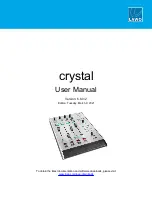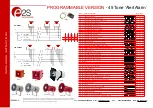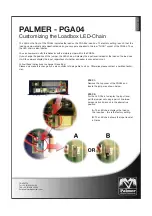
Patient Conditions
Service Manual
8-3
High ambient light sources such as surgical lights (especially those with a xenon
light source), bilirubin lamps, fluorescent lights, infrared heating lamps, and
direct sunlight can interfere with the performance of a recommended sensor.
To prevent interference from ambient light, ensure the recommended sensor
is properly applied, and cover the sensor with opaque material.
If patient movement presents a problem, try one or more of the following remedies
to correct the problem.
•
Verify the recommended sensor is properly and securely applied.
•
Move the sensor to a less active site.
•
Use an adhesive sensor that improves patient skin contact.
•
Use a new sensor with fresh adhesive backing.
•
Keep the patient still, if possible.
If poor perfusion affects performance, consider using the Nellcor™ forehead
SpO
2
sensor (Max-Fast), which provides superior detection in the presence of
vasoconstriction. Nellcor™ forehead SpO
2
sensors work particularly well on
supine patients and mechanically ventilated patients. During low perfusion con-
ditions, Nellcor™ forehead SpO
2
sensors reflect changes to SpO
2
values up to
60 seconds earlier than digit sensors.
8.3
Patient Conditions
Application issues and certain patient conditions can affect the measurements
of the monitoring system and cause the loss of the pulse signal.
•
Anemia
— Anemia causes decreased arterial oxygen content. Although SpO
2
readings may appear normal, an anemic patient may be hypoxic. Correcting
anemia can improve arterial oxygen content. The monitoring system may fail to
provide an SpO
2
reading if hemoglobin levels fall below 5 gm/dl.
•
Dysfunctional hemoglobins
— Dysfunctional hemoglobins such as carboxyhe-
moglobin, methemoglobin, and sulfhemoglobin are unable to carry oxygen. SpO
2
readings may appear normal; however, a patient may be hypoxic because less
hemoglobin is available to carry oxygen. Further assessment beyond pulse oxime-
try is recommended.
•
Additional possible patient conditions
may also influence measurements.
–
Poor peripheral perfusion
–
Excessive patient movement
Summary of Contents for Nellcor GR101704
Page 1: ...Service Manual Nellcor Bedside Respiratory Patient Monitoring System...
Page 8: ...Page Left Intentionally Blank vi...
Page 32: ...Page Left Intentionally Blank 2 14 Service Manual Product Specifications...
Page 46: ...Page Left Intentionally Blank 3 14 Service Manual Theory of Operations...
Page 54: ...Page Left Intentionally Blank 4 8 Service Manual Product Overview...
Page 114: ...Page Left Intentionally Blank 7 18 Service Manual Trend Data Access...
Page 120: ...Page Left Intentionally Blank 8 6 Service Manual Performance Considerations...
Page 168: ...Page Left Intentionally Blank 10 46 Service Manual Modification and Testing...
Page 192: ...Repair 12 4 Service Manual Figure 12 2 Exploded View of Internal Components...
Page 232: ...Page Left Intentionally Blank 12 44 Service Manual Repair...
Page 235: ......
















































